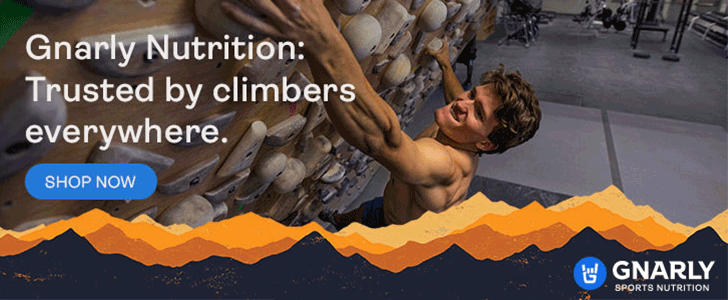Behind the Wrench…is an ongoing series that interviews the “rock stars” of the climbing industry: the routesetters at the gyms. In this installment, we’re talking to Nathan Hadley, Setting Manager at the Bouldering Project’s Fremont location in Seattle, Washington. Hadley found his start through competitive youth climbing, where he podiumed several times. He took a break from climbing to pursue an undergraduate degree in Environmental Science. When he returned to the climbing world, he wanted something different, and thus fell into routesetting. Hadley is also an accomplished climber with a hefty tick list: the Alpine Trilogy in the Canadian Rockies (three alpine routes rated 5.14 and harder), the first free ascent of Index’s first 5.14, boulders up to V12, and onsights up to 5.13c. His wide-ranging experience in the climbing and routesetting industries offers an in-depth look at where the industry was, and where it might be heading.
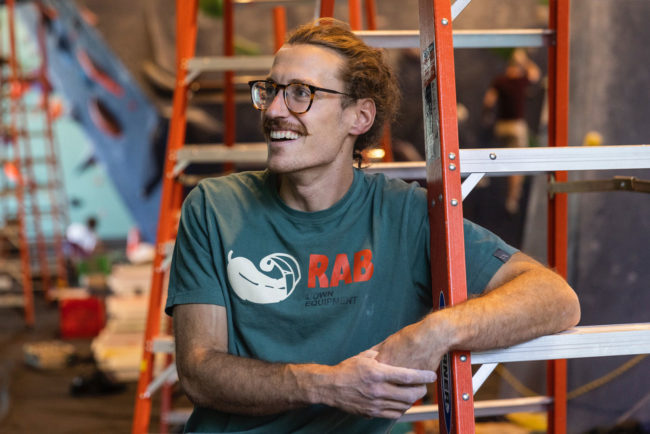
Name: Nathan Hadley
Title: Setting Manager, Bouldering Project Fremont
Location: Seattle, Washington
CHEN: I want to start with your days as a youth competitor. Can you describe how you got started as a climber and then routesetter?
HADLEY: I started in Indiana when I was seven. My parents just put me in a kids club that met every other week, then quickly I got pulled into the youth climbing team, and exposed to competitive climbing. I was also quickly exposed to outdoor climbing. My parents weren’t climbers before, but my dad was very excited to learn. I still climb with my dad sometimes, we did a multi-pitch climb recently, and we’re talking about what’s next.
You left climbing briefly after competing in the youth circuit and, when you returned, you wrote, “But climbing was too similar to what it had been, and I felt pressure to make something of my life outside of climbing.” Where does this pressure come from, and how has it evolved over the years?
Everybody has their own baggage, and I put a lot of pressure on myself. I wouldn’t say I took it for granted, but because I grew up climbing, it just was always there. I was obviously choosing climbing because I kept doing it. But because climbing was always there, it wasn’t ever aspirational.
I’ve always wanted to create and make an impact in the world. I studied environmental science, and I want to help the efforts of taking care of this planet better. So there’s always that piece of me that still wants to figure out how I could be of service in that way.
I do feel like I’m doing something meaningful here at Bouldering Project (BP) through creating and offering these experiences. We can change peoples’ lives through good setting and creating community. Even if I grew up climbing, I am still actively choosing to be here now. But the decisions that I make down the road can change. I’d also like to prioritize my own climbing, as I’m sure you understand as a routesetter yourself. It’s tough to prioritize your own climbing with a setter’s workload.

There is a rise in the climbing gym industry right now. Last year CBJ reported an 8% growth rate in the U.S., which has been over 5% for the past eleven years. We’re also seeing more vertical integration (Movement, BP, VITAL, etc.). Where do you think this trend is going? Up, down, or have we reached a carrying capacity?
I think there is an insane amount of room to grow. There could be so many more gyms than there already are. I’m the Setting Manager, or Head Setter, at the BP’s Fremont location in Seattle. That location is only a little over a year old. We opened right after the second wave of lockdowns in 2020. Since then, the number of people that flock to the gym is mind-boggling. There are a lot of gyms in Seattle. There’s even another BP down the road, 15 minutes away. That just goes to show the current demand.
Climbing gyms create an environment that makes the sport feel accessible and fun, not to mention the community space that climbing gyms are, which is resonating with a lot of people. It’s something that could be in every neighborhood.
It’s often said that a climbing gym is that “third place”. It’s not work, it’s not home, it’s that third place.
Exactly. I think what you feel and the connection to other people and the friends that you go and climb with is real. It is a community space―people seek it out because it adds value to their lives.
If you believe that the climbing gym industry is going to continue to grow, then so should the demand for setters. In the current landscape that I’m witnessing, it’s difficult to access routesetting education. What are your thoughts on this?
I think good mentors exist, but the educational pathways aren’t great. At BP, we’re trying to create a pathway for our own setters to progress, especially for the new ones who aspire to grow in this industry. The responsibility falls on the Head Setters. Personally, I take that responsibility seriously. If you are a Head Setter, you should. It’s a steep learning curve, but there is an endless possibility of what someone new can build if you give them creative freedom. Think about it: What happens when you give someone all the tools but none of the assumptions about what they can or cannot do? I think time will tell whether we will be able to keep up with the ambitions of growth.
Do you think that this viability of a routesetting career is applicable to every setter or to a select few?
While we might not be there yet, it’s going in a good direction in general. All ships will rise. Management positions are a viable career path for some people, especially if they want to buy a house or start a family. Right now, those are the positions that setters will need to get to do that. We’re at a tipping point though, especially for setters who are not in management. The crux is workload. How many people can handle setting full time, five days a week, up to 40 hours?
As an industry, the next step is better supporting the health and well-being of both full-time and part-time setters. The goal is to provide career viability for those who don’t want to set full-time, or don’t want to move into management. It seems many gyms are solving that issue by combining setting, coaching and customer service roles―finding ways setters bring value to the facility outside of setting. Setters have a lot of knowledge about climbing and movement, so coaching and instructing responsibilities make a lot of sense.
We’re living through this transition. The question is, how will gyms create setting positions that are more diverse, accessible to more people, and better supported? We’re evolving, but as long as there is an alignment on these values, we can handle the growing pains. We’re moving from this small gym dynamic into a more corporate world. I hope that this growth will only benefit setters in the end.
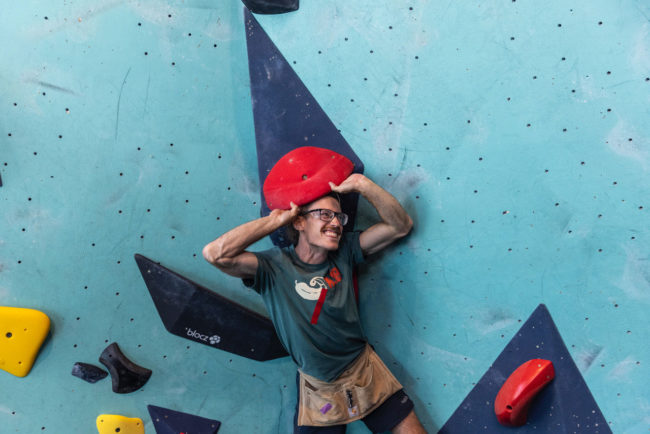
You worked with Tonde Katiyo for a hot minute. Was he ever in the works of putting together an educational pathway for setters?
Yeah, he put in the effort. That was his passion and he wanted to have a physical base for setting education. It didn’t pan out, primarily because of pandemic-related reasons. I think a lot of people would have liked that, myself included. The timing of it didn’t work out then, but someone else will do it. I think we’re to the point where one of these big companies like BP or Movement will do it. It makes business sense for them to have one, even if it’s just to train their own setters. BP, for instance, is hiring a Lab Director with setter training in mind.
How has working with notable setters who have introduced new ideas―ideas that might not have been widely accepted at the time―influenced your learning curve as a setter?
I think BP stood out in the past because of the bouldering circuits. That’s influenced my approach to training. I’ve talked about it before on other channels, so I won’t go into detail here.
[Hadley has spoken extensively on bouldering circuits as an effective form of training for his alpine pursuits. You can find them here and here].
Something I haven’t spoken about is the usage of volumes. It expanded how I look at routesetting and how to create a varied experience for the climber. It’s less about the individual route or problem, but about how this fits in as a whole with what the rest of the facility offers. How do I create a diverse climbing experience across a range of boulders? That’s much more complex and interesting to me than zeroing in on an individual problem.
There is a misconception that volumes are inherently comp-styled problems. I understand why. Competitions are usually where you see volume-heavy problems and routes. Of course, competitions held by USAC or IFSC tend to have tons of resources. The setters have all the holds and volumes they want to use, with new shapes and debuts, so they have the ability to throw everything at a single route or boulder problem. Your neighborhood climbing gym doesn’t have the same kind of resource access. Early on in BP’s history, Tonde pushed for having more resources and materials for setters, not so we could build more comp-style boulders, but so we could create a more varied climbing experience.
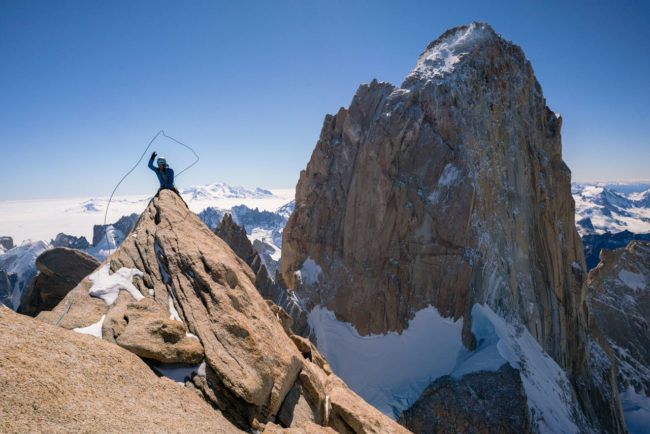
Right. Volumes can turn vertical walls into slabs, and overhung panels into caves. The climber is climbing on the terrain, not just the holds.
Exactly. Our goal is to create more kinds of experiences. Have you climbed on big tufas? No? We’re here to create an experience of that. It irks me when people box volumes into comp-style setting. It doesn’t have to be. [Holly shares with Nathan a photo of an all-volumes route she recently set.] Wouldn’t it be cool if you could create ten routes at your gym like that? 3D climbing, people will enjoy that. It’s visually striking, it’s different. That’s not to say you don’t set tick-tacky gym routes, or ladders, or trainers. Those need to exist too. We just want variety. Back to your question about working with new ideas, the biggest influence on my setting is to keep an open mind. Don’t get boxed in.
Do you see any trickle-down effects in setting trends? Say, from World Cups to your neighborhood climbing gym?
I think it probably flows both ways. People certainly watch World Cups and are inspired by that, and those setters are putting up ground-breaking stuff. We owe paddle-dynos largely to Laurent Laporte, a World Cup setter. That wasn’t that long ago, so as I said, I’m not ruling out the possibility of creation of new movement. Laurent is the owner of Cheeta Holds and he designed holds to make these dynamic coordination moves work, which were shared with the world on the competition stage. But don’t underestimate the experimentation that’s going on at climbing gyms. That’s the biggest sandbox. Setters are constantly trying new things. Complex volume situations, and the infinite number of ways you can play with screw-on holds―this experimentation comes from the climbing gyms. I think there are probably trends people start and don’t even know they started them. Ideas spread like that.
There’s an infinite amount of shapes and an infinite amount of combinations of those shapes. Sure, shapes fall into larger categories like jugs, edges, pockets and slopers, but there are an infinite number of ways to shape and play with those holds―both how it looks visually, and how it feels physically when you climb on them. I think we’re past the phase of new kinds of movement. Especially as setters, you don’t often see a move and go, ‘Oh, I’ve never seen that before.’ I’m not ruling it out, it’s still possible, but it may be far and few between.
The innovation is in creating new situations rather than moves. This may be my bias, but I do believe it. There is an infinite amount of situations you can create, especially when working with volumes and an increasingly diverse selection of holds. So of course, there is always something new.
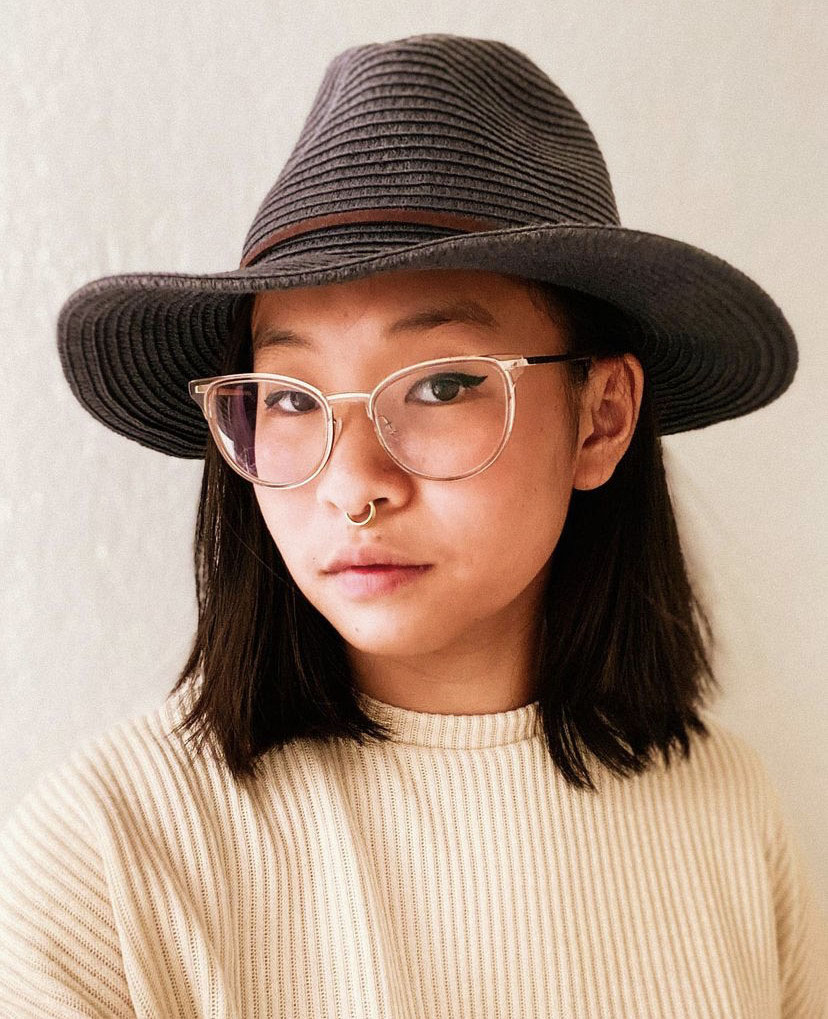
Holly grew up in Taiwan and Hong Kong. Now she lives in Denver where she reports, writes and routesets. Beyond the Climbing Business Journal, her writing has been published by Alpinist Magazine, Climbing Magazine, Gym Climber and Sharp End Publishing. Holly’s motto has always been: “keep it interesting.”
Read our interview with Holly: Storytelling Through Movement






